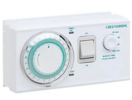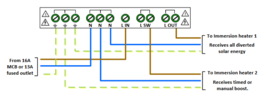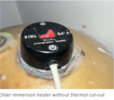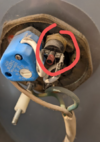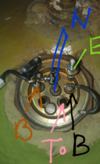I have recently replaced a copper cylinder with stainless steel cylinder. I have also, at the same time, replaced a single element immersion heater with a dual element. (Sink/bath) suitable for a stainless tank. Both tanks are the same size, both vented, both insulated, and both fitted with an unused single coil. (The water has only ever been heated electrically; the coil is redundant). Inlets and outlets identical-not changed.
The original immersion heater was 27” and heated the entire tank. The new immersion heater has a short element of about 14” (2KW) and a long element of 27” (2.85KW). When the sink/bath switch is on “sink” the top half of the new tank heats up; so presumably the short immersion heater is working.
When the sink/bath is on “bath” it seems that only the top half of the tank is heated the bottom half remains cold; almost as if the bottom half of the element is not working!
I have continuity tested both elements and both seem fine. The voltage across the elements is 230V on both elements when switched on. The resistance of the short element 28 ohms and the resistance on the long element is 20 ohms.
I am at a complete loss as to understand why the original 27” element would heat the entire tank but the replacement 27” element only heats the top half. I cannot imagine a defect in the element that could cause this.
Please anyone-any ideas?
The original immersion heater was 27” and heated the entire tank. The new immersion heater has a short element of about 14” (2KW) and a long element of 27” (2.85KW). When the sink/bath switch is on “sink” the top half of the new tank heats up; so presumably the short immersion heater is working.
When the sink/bath is on “bath” it seems that only the top half of the tank is heated the bottom half remains cold; almost as if the bottom half of the element is not working!
I have continuity tested both elements and both seem fine. The voltage across the elements is 230V on both elements when switched on. The resistance of the short element 28 ohms and the resistance on the long element is 20 ohms.
I am at a complete loss as to understand why the original 27” element would heat the entire tank but the replacement 27” element only heats the top half. I cannot imagine a defect in the element that could cause this.
Please anyone-any ideas?


